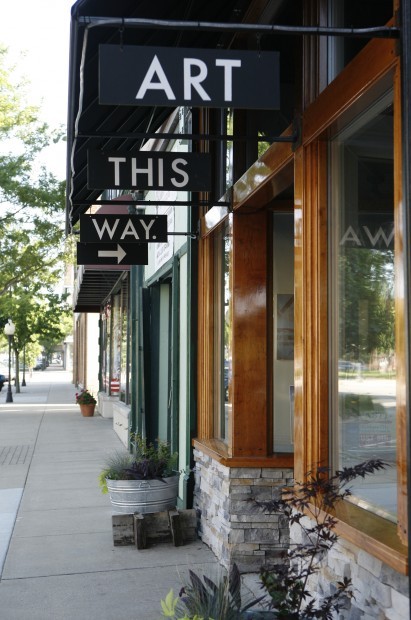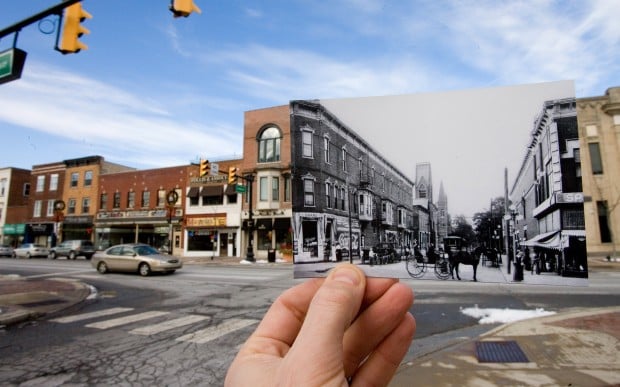
Heart of the community -- Michigan City
John J. Watkins, File | The Times
Michigan City is taking a firmer grip in its quest to turn the city's north end into a blossoming 'Uptown Arts District.' The Walnut Ink Gallery is on Franklin Street
http://www.nwitimes.com/news/local/illinoi...a36037d1aa.html
QUOTE
MICHIGAN CITY
Mayor: Consensus key to revitalization
Michigan City has come a long way in its effort to revitalize the downtown in a short time.
The biggest challenge was getting a group of investors and residents to share a vision and work together to make it happen, said City Councilman Richard Murphy.
"I believe we have that now," Murphy said.
Murphy said noticeable changes in reviving the downtown have occurred just within the past two years.
Mayor Ron Meer said the once-thriving downtown laid dormant for so long because nobody could come together and decide on one strategy.
There also were people who couldn't accept that the ''big box stores'' and grocery chains that began migrating to the city's south side in the early 1970s were not coming back.
"Everybody knew something needed to be done, but they couldn't come to a consensus. Sooner or later you have to move forward," Meer said.
Fueling the revitalization is the arts, but there are specialty stores and shops to help drive the recovery in a downtown with appeal due to its historic flavor and close proximity to Lake Michigan, Blue Chip Casino and other attractions.
Another asset for the downtown is the nearby South Shore Railroad for people who want to commute from Chicago.
To keep the rebirth going, Murphy said the long vacant Warren Building, a former hotel in the 700 block of Franklin St., is a major key.
He said state tax credits are being pursued for a proposed artist colony to go into the seven-story building in the 700 block of Franklin Street.
A $10 million investment is on the table from Artspace, a Minneapolis-based group, which plans to have 40 units for artists to live and work in the structure.
Murphy said that would snowball into even more investment in the downtown as well as additional foot traffic.
He said the economy is the biggest challenge for an even healthier downtown, but the low real estate prices can fuel the momentum during these difficult times.
"We have money to invest in our downtown and again we have a committed vision from these investors, these people who are all on the same page. There's a lot of excitement for us," Murphy said.
Read more: http://www.nwitimes.com/news/local/illinoi...l#ixzz1jZO3Traj
Mayor: Consensus key to revitalization
Michigan City has come a long way in its effort to revitalize the downtown in a short time.
The biggest challenge was getting a group of investors and residents to share a vision and work together to make it happen, said City Councilman Richard Murphy.
"I believe we have that now," Murphy said.
Murphy said noticeable changes in reviving the downtown have occurred just within the past two years.
Mayor Ron Meer said the once-thriving downtown laid dormant for so long because nobody could come together and decide on one strategy.
There also were people who couldn't accept that the ''big box stores'' and grocery chains that began migrating to the city's south side in the early 1970s were not coming back.
"Everybody knew something needed to be done, but they couldn't come to a consensus. Sooner or later you have to move forward," Meer said.
Fueling the revitalization is the arts, but there are specialty stores and shops to help drive the recovery in a downtown with appeal due to its historic flavor and close proximity to Lake Michigan, Blue Chip Casino and other attractions.
Another asset for the downtown is the nearby South Shore Railroad for people who want to commute from Chicago.
To keep the rebirth going, Murphy said the long vacant Warren Building, a former hotel in the 700 block of Franklin St., is a major key.
He said state tax credits are being pursued for a proposed artist colony to go into the seven-story building in the 700 block of Franklin Street.
A $10 million investment is on the table from Artspace, a Minneapolis-based group, which plans to have 40 units for artists to live and work in the structure.
Murphy said that would snowball into even more investment in the downtown as well as additional foot traffic.
He said the economy is the biggest challenge for an even healthier downtown, but the low real estate prices can fuel the momentum during these difficult times.
"We have money to invest in our downtown and again we have a committed vision from these investors, these people who are all on the same page. There's a lot of excitement for us," Murphy said.
Read more: http://www.nwitimes.com/news/local/illinoi...l#ixzz1jZO3Traj

